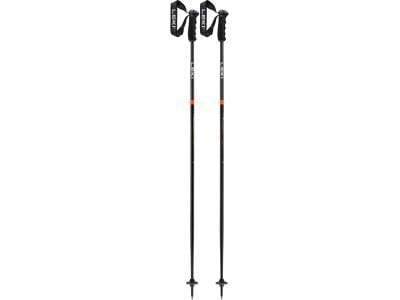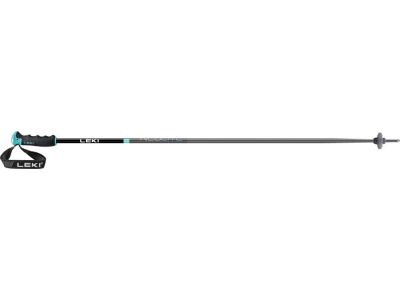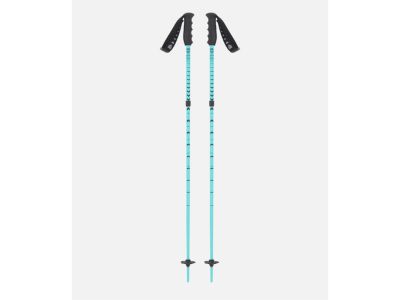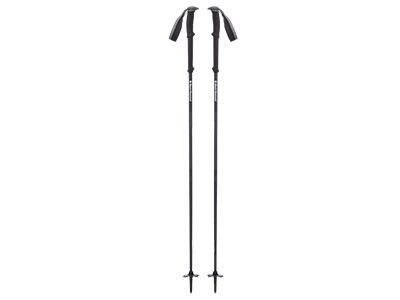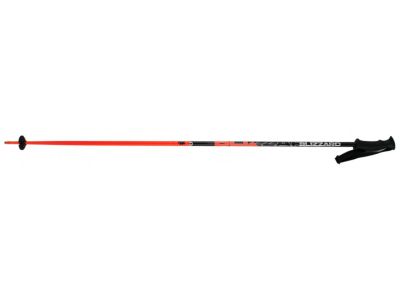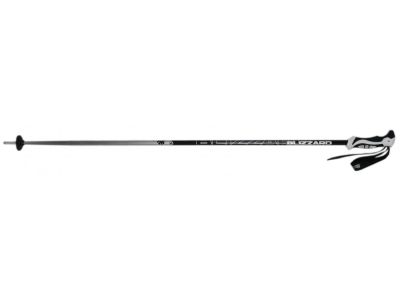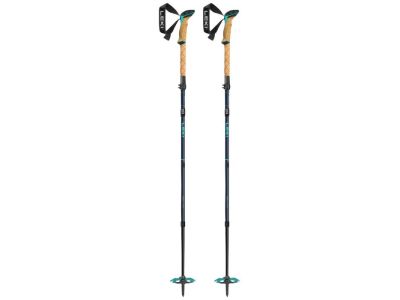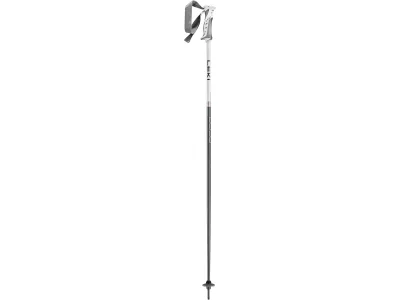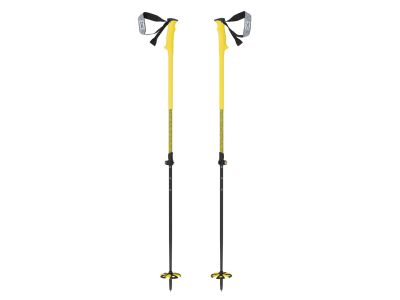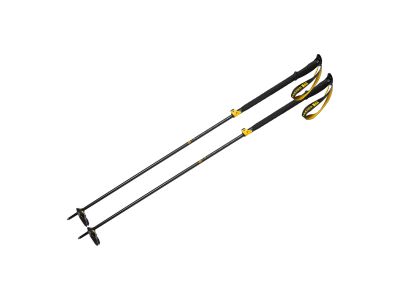Fixed ski poles, also known as non-adjustable poles, are specifically designed for back country skiing and ski mountaineering. Poles play a key role in providing stability, balance, and support during ascents and descents in challenging terrain.
Fixed skimo poles are typically made from lightweight and durable materials, such as aluminium or carbon fibre. This construction ensures that the poles are strong enough to withstand the rigours of ski touring, while remaining lightweight for easy handling. They are available in a variety of lengths to suit different heights and skier preferences.
What are the main advantages of using fixed skimo poles?
Using fixed skimo poles has several advantages:
- Stability and balance: Fixed poles provide excellent stability and balance when traversing challenging terrain. They help distribute weight evenly and provide support, especially when climbing hills or traversing uneven or steep slopes.
- Efficiency: Fixed skimo poles help increase efficiency by providing additional power, leverage, and greater rigidity over collapsible or telescopic poles. They allow skiers to lift off the ground and propel themselves forward, reducing strain on their legs and conserving energy.
- Safety: Fixed poles contribute to safety in a number of ways. They provide stability on the descent and help skiers maintain control in steep or icy conditions. They can also be used to assess snow stability by examining the snowpack for potential hazards such as hidden cracks or unstable snow layers. Their use is not limited to a folding, shortening and adjustment system, the lifespan and damage of which must be taken into account. They are safe to use in any situation.
- Versatility: Fixed skimo poles are versatile tools that can be used for a variety of purposes beyond skiing. They can be used as makeshift tent poles, for building snow shelters, or even for searching for hidden objects or features in the snow.
- Durability: Fixed skimo poles are made from durable materials such as aluminium or carbon fibre, ensuring they can withstand the rigours of back country skiing. This durability allows skiers to rely on their poles in demanding conditions without worrying about the material breaking or malfunctioning.
- Weight savings: Compared to adjustable poles, fixed poles are usually lighter because they don't have additional adjustment mechanisms. This weight savings is especially beneficial during long-distance ski tours where every gram counts.
In conclusion, fixed skimo poles offer a number of benefits including stability, efficiency, safety, hill climbing assistance, versatility, durability, and weight savings.
How to choose the right fixed poles for ski mountaineering?
When choosing fixed skimo poles, consider the following factors to ensure you choose the right ones for your needs:
- Length: The length of your poles is crucial to their proper use and functionality. Consider your height, skiing style, and personal preference. As a general rule, if you turn your ski pole upside down and grip it just below the basket, your elbow should rest comfortably near your hip joint with a 90-degree angle at your elbow. However, some skiers prefer shorter poles for better manoeuvrability, while others opt for longer poles for more stability on the slopes.
- Material: Fixed poles are usually made of lightweight materials such as aluminium or carbon fibre. Aluminium poles are more affordable and durable, but they are a bit heavier. Carbon fibre poles are lighter and absorb more vibrations, but can be more expensive. Choose the material that best suits your budget and desired performance.
- Grip: The handle is where you grip the poles, so it should be comfortable and provide a secure hold. Look for ergonomically designed handles made from materials like rubber or foam. Consider the shape, texture, and size of the handle so that it fits comfortably in your hand and allows for a firm grip, even with gloves on.
- Basket: The basket is the circular disc at the bottom of the pole that prevents it from sinking too deep into the snow. Back country skiing generally prefers larger baskets, which provide better flot in deep snow. Some poles have removable baskets that allow you to swap between different sizes depending on the conditions you expect.
- Weight: Since back country skiing involves more climbing and moving over longer distances, lighter poles can make a significant difference in reducing fatigue. Consider the overall weight of the poles and choose the lightest option that still provides the durability and performance you need.
Why are ski mountaineers increasingly choosing fixed poles?
Fixed-length, long-handled poles are becoming a popular choice among ski mountaineers for their strength and simplicity.
Are fixed poles better than folding poles for ski mountaineering?
Fixed poles have several advantages over telescopic or folding poles. They are lighter, more durable, and have better rigidity, providing greater stability and control while ski touring. Fixed poles are also easier to use, more affordable, and stronger, making them suitable for challenging terrain. However, the choice between fixed poles and telescopic or folding poles ultimately comes down to personal preference and the specific needs of the skier.
